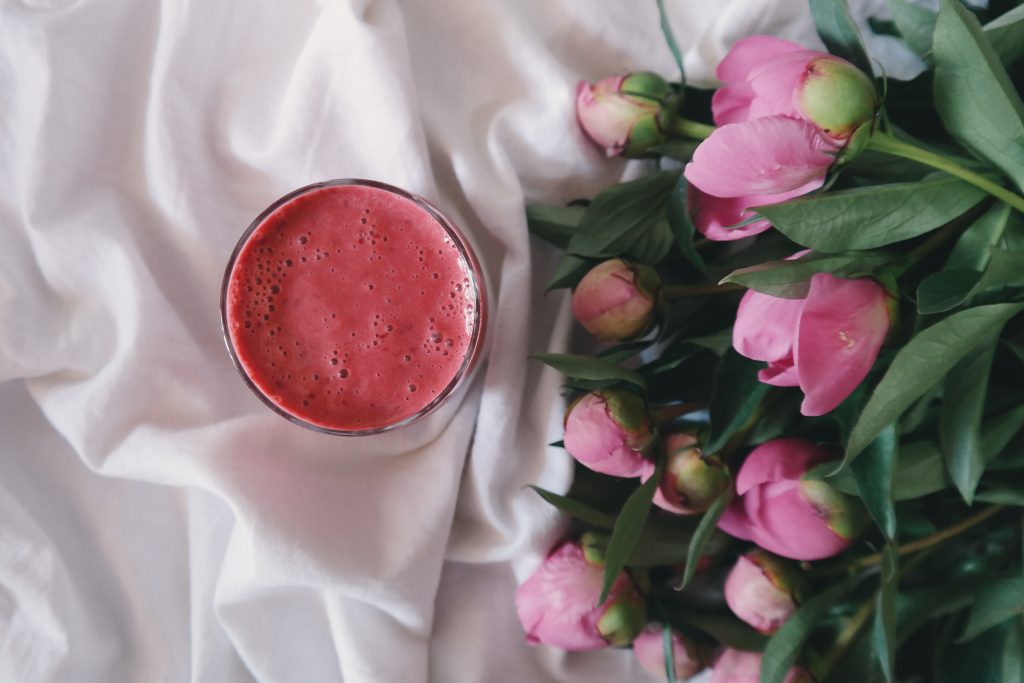
Homemade Smoothies – Top Tips
Smoothie’s have been around for a while now. In fact, the word was first used to describe a drink back in the 1930’s when the first blender was invented, but the popularity of smoothies really took off in the 70’s. Since then they have become commonplace in supermarkets, cafes and even in fast food restaurants and service stations. They’re not always the healthiest though. These days a shop-bought smoothie might contain up to 10 tsp sugar per 250ml liquid. So how can you make yours even more healthy. Here are my top tips.
Use the Whole Fruit:
There are many nutrients in the skin, pith and sometimes the core of fruit and vegetables that would otherwise not be included if using a juicer.
Skins to include:
Apple: The skins are a good source of vitamin A and are extremely high in vitamin C. As much as 50% of the vitamin C in the fruit can be found in the skin. The skin also contains fibre, antioxidants, and quercetin, a flavonoid that is purported to have anti-inflammatory properties.
Apricot: Apricot skins are a good source of vitamin C and beta-carotene.
Grape: Grape skins are great for you and contain up to 100 times the concentration of resveratrol as does the grape pulp. Resveratrol is a phytochemical that has been linked to the inhibition of cancer, heart disease, and even Alzheimer’s.
Pear – The skin is a good source of vitamin C and chlorogenic acid, an important antioxidant.
Plum: skins contain fibre, vitamin C, beta-carotene, and antioxidants.
Pith to include:
Lemon – The pith is extremely high in vitamin C and contains vitamin B6 and fibre, too.
Orange – There is as much vitamin C in its pith as the rest of the fruit, as well as fibre, pectin, bioflavonoids, and antioxidants.
Cores to include:
Pineapple – The healthiest part of a pineapple is its core which is loaded with bromelain, an enzyme which acts as a natural anti-inflammatory. Vitamin C, fibre, manganese, and copper can all be found in the core as well.
Use a high-powered blender
Juice is easily absorbed when using a blender as it breaks down the cell walls of fruits and vegetables so that they are pre-digested already. This means that the power-packed nutrients are getting directly into your system.
Making your own smoothie is also a wonderful way to ensure that you are consuming your recommended servings of greens too. Let’s face it, no one wants to be eating four cucumbers and three bunches of spinach at any time of day but adding these to smoothies enables you to get a healthy amount of vegetables in one go.
Using greens in smoothies oxygenates the body due to the addition of chlorophyll and enables you to release stored toxins in our bodies. When you ingest chlorophyll, your iron level is elevated and as a result of this, you’ll find that your circulation improves and you’ll have much more energy.
Add protein to a smoothie
The addition of protein to a smoothie means your blood sugar levels don’t rise as much as they might otherwise. Fruit is after all a sugar and without the addition of protein it can cause you to feel more energetic but only in the short term. Adding the protein blunts the rise of the blood sugar and inhibits the release of insulin into the blood.
Protein can be added in the form of yogurt, kefir, nuts, seeds, nut butter, egg whites or protein powder.
Use different coloured fruit and vegetables
Red fruit and vegetables:
Red berries and other red fruits; raspberries, cherries, red apples, and strawberries are excellent sources of antioxidants.
Red tomatoes have a specific kind of antioxidant that is particularly important for men. You can find abundant amounts of lycopene in tomatoes, and lycopene has been shown to contribute to the health of the prostate gland.
Resveratrol has been shown to decrease the growth of cancer cells, help nerve cells stay healthy in diabetics, and also decrease heart disease by helping to maintain blood vessels. You can find resveratrol in red grape skins.
Blue and purple vegetables and fruit
Plums, blackberries, blueberries are high in fibre, vitamin C, and antioxidant polyphenols. As a result, incorporating berries into your diet may help prevent and reduce symptoms of many chronic diseases.
Orange and yellow
Beta-carotene, an antioxidant that is thought to help protect against eye disease and some forms of cancer. Try orange foods like carrots, pumpkin, and winter squash. Orange and yellow fruits that contain ample antioxidants include nectarines, oranges, lemons, peaches, and grapefruit.
Green vegetables are good for you
Broccoli packs an extremely healthy punch. Broccoli contains lots of sulforaphane, an antioxidant that has been receiving a lot of attention from researchers lately because it helps the body get rid of toxins, supports the immune system, and can even slow down tumours.
Leafy greens contain lots of iron and vitamin K which can help with clotting if blood is thin.
